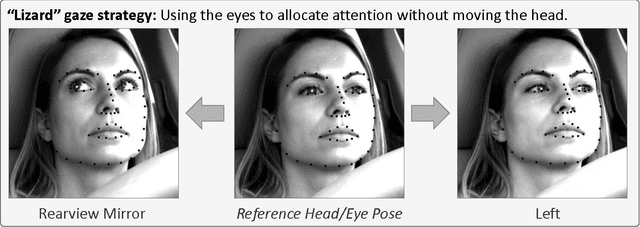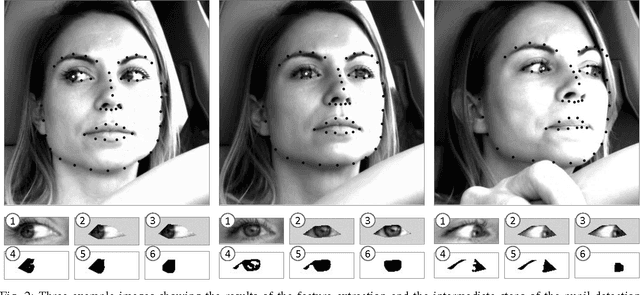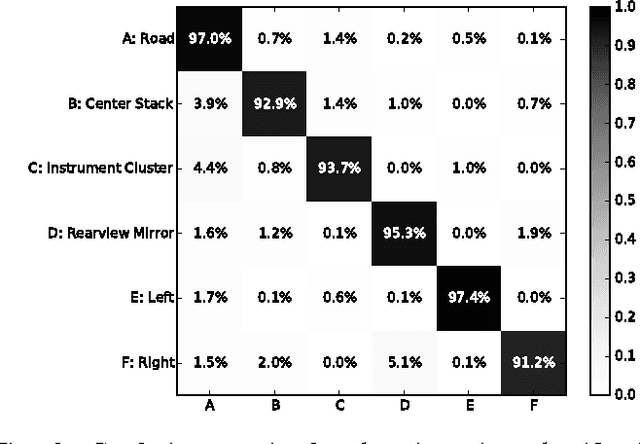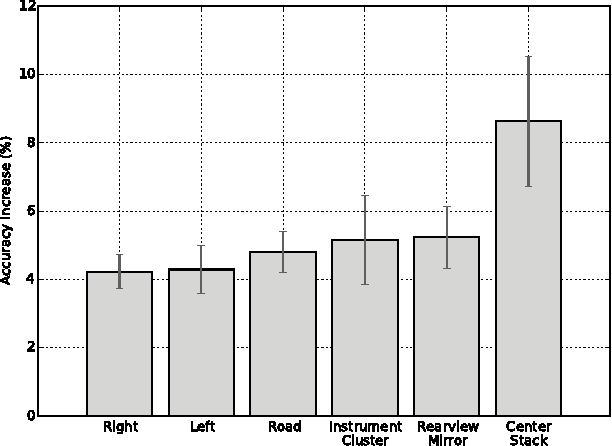Owl and Lizard: Patterns of Head Pose and Eye Pose in Driver Gaze Classification
Paper and Code
Nov 20, 2016



Accurate, robust, inexpensive gaze tracking in the car can help keep a driver safe by facilitating the more effective study of how to improve (1) vehicle interfaces and (2) the design of future Advanced Driver Assistance Systems. In this paper, we estimate head pose and eye pose from monocular video using methods developed extensively in prior work and ask two new interesting questions. First, how much better can we classify driver gaze using head and eye pose versus just using head pose? Second, are there individual-specific gaze strategies that strongly correlate with how much gaze classification improves with the addition of eye pose information? We answer these questions by evaluating data drawn from an on-road study of 40 drivers. The main insight of the paper is conveyed through the analogy of an "owl" and "lizard" which describes the degree to which the eyes and the head move when shifting gaze. When the head moves a lot ("owl"), not much classification improvement is attained by estimating eye pose on top of head pose. On the other hand, when the head stays still and only the eyes move ("lizard"), classification accuracy increases significantly from adding in eye pose. We characterize how that accuracy varies between people, gaze strategies, and gaze regions.
 Add to Chrome
Add to Chrome Add to Firefox
Add to Firefox Add to Edge
Add to Edge